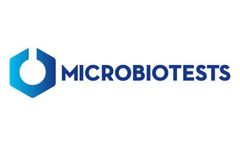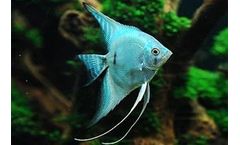aquatic biology Articles
-
Progress on water data integration and distribution: a summary of select US Geological Survey data systems
Critical water-resources issues ranging from flood response to water scarcity make access to integrated water information, services, tools, and models essential. Since 1995 when the first water data web pages went online, the US Geological Survey has been at the forefront of water data distribution and integration. Today, real-time and historical streamflow observations are available via web ...
-
In-Situ® Rugged Dissolved Oxygen (RDO®) Sensors Use the Latest Advancements in Optical Measurement Technology
Dissolved oxygen (DO) is one of the most important parameters monitored when evaluating water quality, aquatic biology, and other environmental and industrial processes. The In-Situ Rugged Dissolved Oxygen (RDO) Sensor measures DO using the latest advancements in optical measurement technology. Water quality professionals will benefit from In-Situ Inc.'s investment in new product development. By ...
-
Developing a national water quality criteria system in China
Water quality criteria (WQC) form a scientific basis for the development of water quality standards. The study of WQC in China has been insufficient. This mini review introduces the progress that has been made towards the establishment of a WQC system in China. A systematic WQC study has been ongoing in China for several years, mainly referring to the WQC system in the United States. Some ...
-
Hydroinformatics in multi-colours—part green: applications in aquatic ecosystem modelling
The present paper focuses on demonstrating the capabilities of modern hydroinformatics tools in the field of environmental systems by integrating biotic and abiotic process modelling. Abiotic processes like hydrodynamic flow and transport phenomena are often formulated based on physical principles like conservation of mass, momentum and energy. These processes are adequately represented ...
-
Cyst-Based Toxicity Tests. - I. A Promising New Tool for Rapid and Cost Effective Toxicity Screening of Chemicals and Effluents
Abstract : The determination of the toxicity of effluents and wastes at the aid of biological tests (bioassays) is hampered very seriously by the necessity of continuous culturing or maintenance of live stocks of test organisms in sufficient numbers and in a healthy state. Consequently such assays are (and can) only be performed in specialized laboratories and in limited number because of the ...
-
Different Kinds of Freshwater Angelfishes (2)
Different Kinds of Angelfish4.Blue AngelfishScientific name: Pterophyllum scalare varEnglish name: Blue angelfishThe blue angelfish's body surface exudes pure white and blue luster, and the blue color of the dorsal and anal fins is more obvious. It looks very gentle. This soft appearance is very distinctive among the improved species of the angelfish.5.Golden AngelfishScientific name: ...
-
miniDOT Logger Compares Nutrient Utilization and Cycles of Lakes - Case Study
Project Details PRODUCT(S): miniDOT® Logger APPLICATION: Freshwater, Lake PARAMETER: Dissolved Oxygen, Temperature LOCATION: Sapphire Lake and Upper Holland Lake, Montana ORGANIZATION: University of Montana RECOGNITION: Joe Vanderwall Case Study Description Elevation greatly affects the ecosystem metabolism of lakes. The lack of nutrients such as carbon, nitrogen, and phosphorus at ...
Need help finding the right suppliers? Try XPRT Sourcing. Let the XPRTs do the work for you



